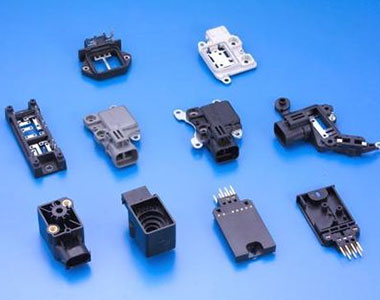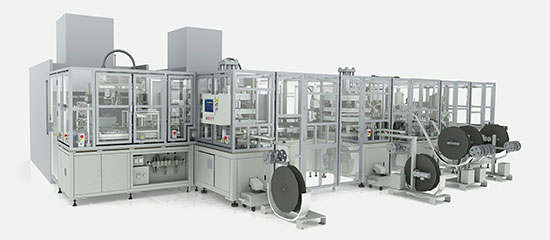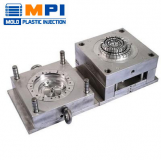Insert molding, a game-changing manufacturing process, is reshaping how we create complex and durable components. This technique ingeniously integrates metal and plastic parts into a unified, robust product. It’s not just about combining materials; it’s about creating a bond that’s stronger and more reliable than traditional methods. Industries from automotive to consumer electronics widely adopt insert molding for its efficiency and versatility. Its ability to enhance product strength, reduce assembly costs, and improve design flexibility makes it a cornerstone in modern manufacturing. Understanding its importance is crucial for anyone involved in product design and production.

Advantages of Insert Molding
Insert molding, a revolutionary manufacturing process, offers numerous advantages, making it a preferred choice in various industries. Let’s see these benefits:
Enhanced Component Strength and Reliability: Insert molding bond materials at a molecular level, significantly enhancing the component’s strength and reliability. This process ensures a stronger bond than what traditional assembly methods achieve.
Cost-Effective Production: By integrating multiple features into a single process, insert molding reduces labor and assembly costs. It eliminates the need for secondary operations, such as soldering or adhesive bonding, leading to significant cost savings.
Improved Design Flexibility: This technique allows for greater design flexibility. Engineers can incorporate various materials, including metals and plastics, into one component. This flexibility encourages innovation in product design.
Lightweight and Compact Products: Products made through insert molding are often lighter and more compact. This quality is particularly beneficial in industries where weight and space are critical factors, such as aerospace and electronics.
Enhanced Durability and Longevity: Components produced through insert molding are highly durable and resistant to wear and tear. This durability translates to products with a longer lifespan, offering better value to consumers.
Reduction in Size and Weight: The process often results in smaller, lighter components. This reduction is especially beneficial in industries where space and weight savings are crucial, such as in electronic devices.
Improved Aesthetics and Finish: Insert molding offers superior surface finish and aesthetics. The process allows for the creation of parts with smooth surfaces and integrated colors, enhancing the product’s overall appearance.
Increased Production Efficiency: Insert molding streamlines the manufacturing process by combining multiple steps into one. This integration leads to faster production times and increased efficiency.
Reduced Material Wastage: The precision of insert molding reduces material wastage. This efficiency is not only cost-effective but also environmentally friendly.
Enhanced Electrical and Thermal Properties: For components requiring electrical insulation or thermal resistance, insert molding is ideal. It allows for the integration of materials with specific properties, enhancing the component’s overall functionality.
How to Insert Molding Works?
Insert molding, an innovative manufacturing process, combines metal and plastic components into a single integrated unit. This guide will walk you through how to insert molding works, in a friendly and easy-to-understand way.
Understanding the Concept
First, let’s grasp the basic idea. Insert molding involves embedding a metal part into a plastic component during the plastic injection molding process. This method produces a single, strong, and integrated piece.
Design and Prototyping
It all starts with design. Engineers design the metal insert and the plastic component, ensuring they fit perfectly together. They often use computer-aided design (CAD) software for precision and accuracy.
Preparing the Metal Inserts
Next, we prepare the metal inserts. These are typically made of stainless steel, brass, or aluminum and can include screws, pins, or other metal parts. Manufacturers often treat these inserts to enhance their bonding with plastic.
Choosing the Right Plastic
The choice of plastic material is crucial. We select it based on the product’s intended use, required durability, and the desired finish. Common plastics used include ABS, polyethylene, and nylon.
Setting Up the Injection Molding Machine
Now, we set up the injection molding machine. We load the chosen plastic material into the machine’s hopper. The machine will then heat the plastic to a molten state.
Insert Placement
Before injecting the molten plastic, we manually or automatically place the metal inserts into the mold. Precision is key here to ensure proper alignment and bonding.
Injection of Molten Plastic
Once the inserts are in place, the machine injects the molten plastic into the mold. The plastic envelops the metal insert, creating a bond as it cools and solidifies.
Cooling and Solidification
After injection, we give the plastic time to cool and solidify. This cooling phase is crucial as it ensures the plastic hardens correctly around the insert.
Mold Opening and Part Ejection
Once the plastic cools, we open the mold. The newly formed part, with the insert securely embedded, is then ejected from the mold.
Quality Inspection
Quality control is vital. We inspect the finished product for any defects, ensuring the insert is correctly positioned and securely embedded in the plastic.
Post-Processing
Sometimes, the finished product might require additional processing. This step can include trimming, painting, or adding surface finishes to enhance the product’s appearance and functionality.
Testing and Validation
Before mass production, we conduct rigorous testing. We check the product’s strength, durability, and functionality to ensure it meets all specifications and standards.
Mass Production
If testing and validation are successful, we move to mass production. Using the same process, we produce large quantities of the insert-molded part.
Packaging and Distribution
Finally, we package the finished products and prepare them for distribution. Proper packaging ensures the products reach their destination safely and without damage.
Feedback and Improvement
Continuous improvement is a part of the process. We gather feedback, both from the manufacturing floor and the end-users, to refine and enhance future production runs.
Insert molding is a detailed and precise process, combining metal and plastic into a single, durable component. This process finds application in various industries, offering enhanced product quality and functionality.
Considerations Before Insert Molding
When considering insert molding for your manufacturing process, it’s essential to make well-informed decisions. Here are five key considerations to keep in mind:
Material Compatibility
First and foremost, ensure the compatibility of the materials you plan to use. The metal insert and the plastic material must bond well together. For instance, if you’re using a stainless steel insert, choose a plastic like ABS or nylon that adheres well to it. This compatibility is crucial for the durability and functionality of the final product.
Design of the Insert
The design of the metal insert plays a pivotal role. It should have features like undercuts or grooves to enhance the bonding with the plastic. A well-designed insert ensures a strong, integrated final product. Consider the insert’s size, shape, and the forces it will need to withstand in its application.

Mold Design and Construction
The design and construction of the mold are just as important. A well-designed mold ensures accurate placement of the insert and efficient flow of the plastic. It also affects the ease of production and the quality of the final product. Ensure your mold design allows for proper cooling and easy ejection of the finished part.
Process Parameters
Setting the right process parameters is critical. This includes the temperature of the molten plastic, injection speed, and pressure. Correct parameters ensure the plastic flows and bonds correctly around the insert. This step requires precision, as incorrect settings can lead to defects like poor bonding or warping.
Quality Control and Testing
Lastly, don’t overlook the importance of quality control and testing. Before going into full production, test the insert-molded parts for strength, bonding, and functionality. Consistent quality control ensures that each part meets the required specifications and standards.
Insert molding is a precise process that requires careful consideration of various factors. From ensuring material compatibility to meticulous mold design and stringent quality control, each aspect plays a crucial role in the success of the process. By paying attention to these details, you can achieve high-quality, durable, and functional insert-molded products.

